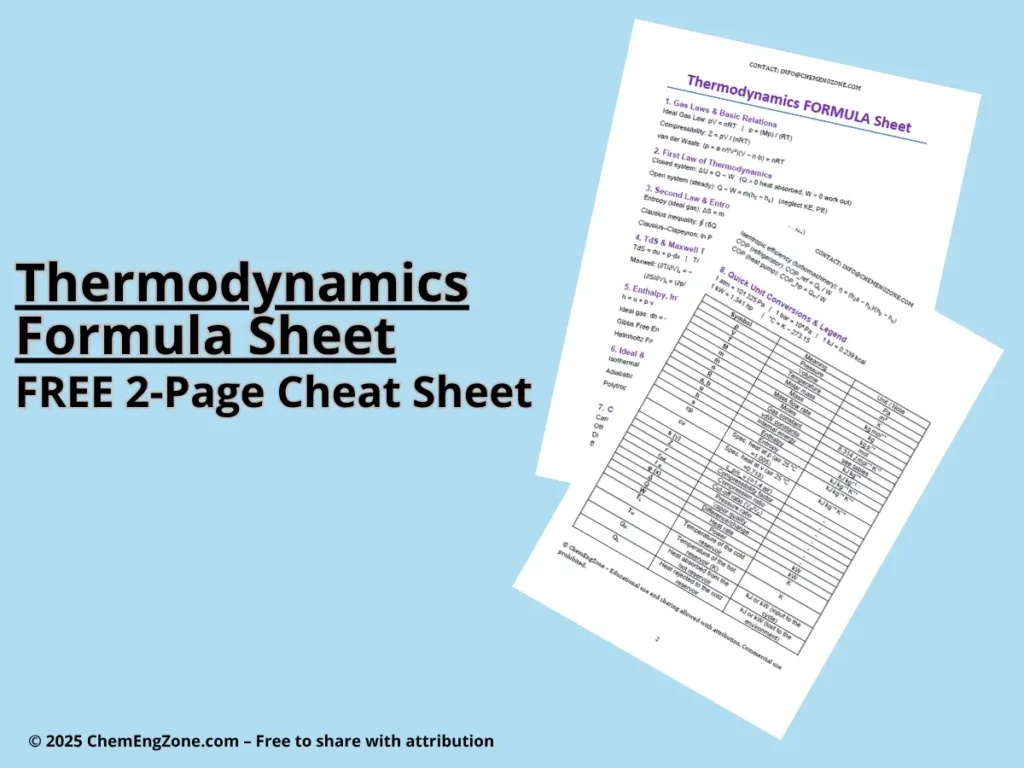
Thermodynamics Formula Sheet
Get instant access to a printable 2-page PDF summarizing
What You’ll Find Inside This Free PDF:
✅ Ideal Gas Laws
✅ First & Second Laws of Thermodynamics (Open & Closed Systems)
✅ Isentropic Relations
✅ Energy concepts: Entropy, Enthalpy, Work
✅ Maxwell Relations & Cycle Efficiencies
🔸 This sheet focuses on laws and formulas directly applicable to real-world calculations — the Zeroth and Third Laws are essential in theory, but not typically required in practical problem solving.
Did You Know? – First law of thermodynamics example
No matter the process, the chemical composition of the system, or how heat and work are exchanged with the surroundings, the algebraic sum of heat (Q) and work (W) depends only on the initial and final states of the system, not on the specific transformation that takes place.
This sum equals the positive or negative change in internal energy:
ΔU = Q − W
What does “algebraic sum” mean?
It means that the signs of Q and W must be considered:
– Heat added to the system (Q > 0) or removed (Q < 0)
– Work done by the system (W > 0) or on the system (W < 0)
Example:
A gas receives +150 J of heat and performs +60 J of work on the surroundings.
ΔU = 150 − 60 = 90 J
→ The internal energy of the system increases by 90 J, regardless of how the transformation occurred (e.g. slowly, rapidly, with compression, or expansion).
Take advantage of carefully selected free resources
Explore MIT Chemical Engineering Courses
Explore free, high-quality courses in chemical engineering.
Chemical Engineering News: Read the latest articles on chemical research, industry trends, and innovations.
AIChE Academy: Access online courses and learning materials designed for chemical engineers.
Open Textbook Library – ChemE: Download free, peer-reviewed chemical-engineering textbooks covering core topics, design practice and emerging technologies.
NPTEL Chemical Engineering Lectures: Free IIT video-courses and certification on core and advanced chemical-engineering subjects via NPTEL.